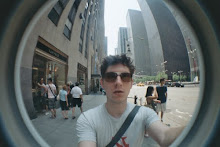
Hello New Paltz! This post is for all of you who live or consumer water from the municipal water supply in the Village of New Paltz, and is in response the popular question, "Where is the water coming from when I turn on my tap?".
The village supplies water to 5500 people through 900 service connections and the water comes primarily from the Catskill Aqueduct. The Catskill Aqueduct consists of two reservoirs (Scholaire Reservoir and Ashokan Reservoir [pictured above]) and is part of the larger system supplying water to NYC. The main line to NYC basically T's off into our filtration facility on Mountain Rest Rd. In addition to water from the aqueduct, the filtration facility is supplied by several local surface water reservoirs. (Take a look at the map below).
Our treatment facility serves two primary functions. The first is to maintain the distribution of water from the reservoirs, and the second is to chlorinate the supply. Nothing is removed from the water and nothing besides the chlorine is added.
Water travels from the facility through a network of underground pipes ranging from 16" to 4" wide until it reaches your home or business and out of your tap.
The Village of New Paltz monitors the quality of the water to ensure contaminants are within the limits set by the Environmental Protection Agency and distribute an annual report with their findings. You may be surprised to learn that heavy metals such as copper and lead, and radioactive elements like uranium were detected!
Here is a link to the 2009 report:
http://www.villageofnewpaltz.org/filemgmt_data/files/Water%20Quality%20Report%202010.pdf
Have questions? Just let me know and I'll try to find out for you.
Bottoms up! Kyle


